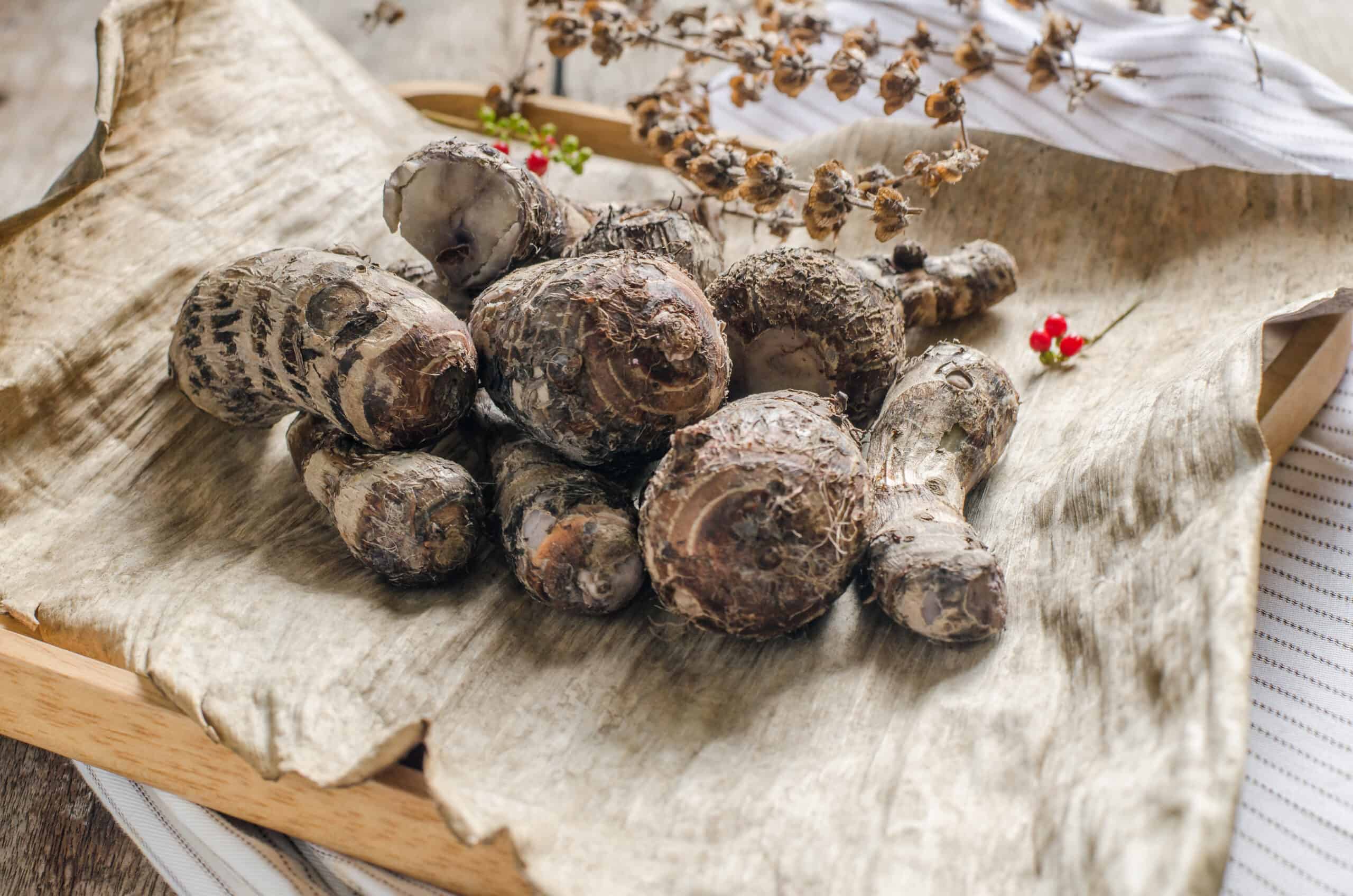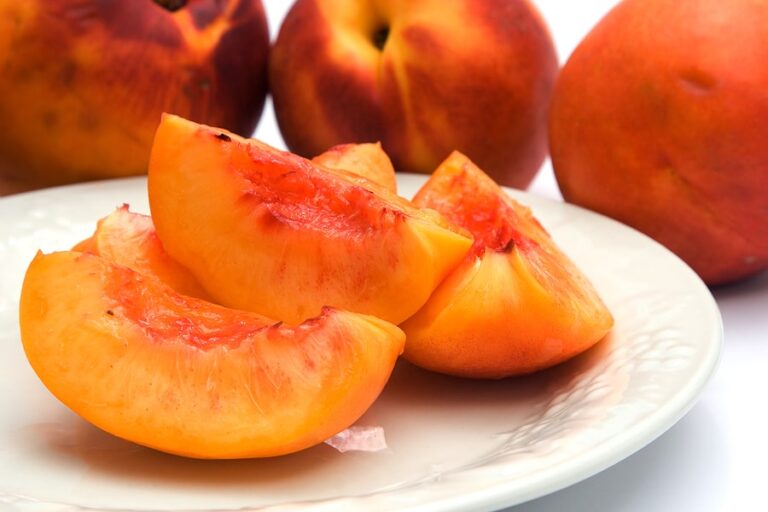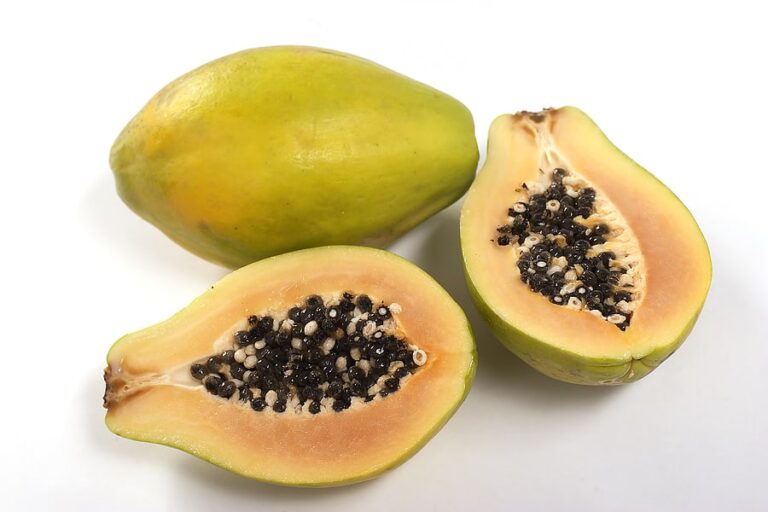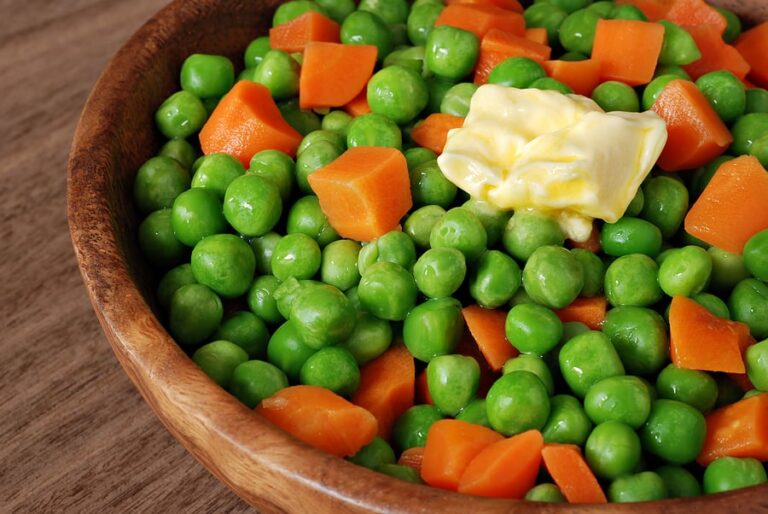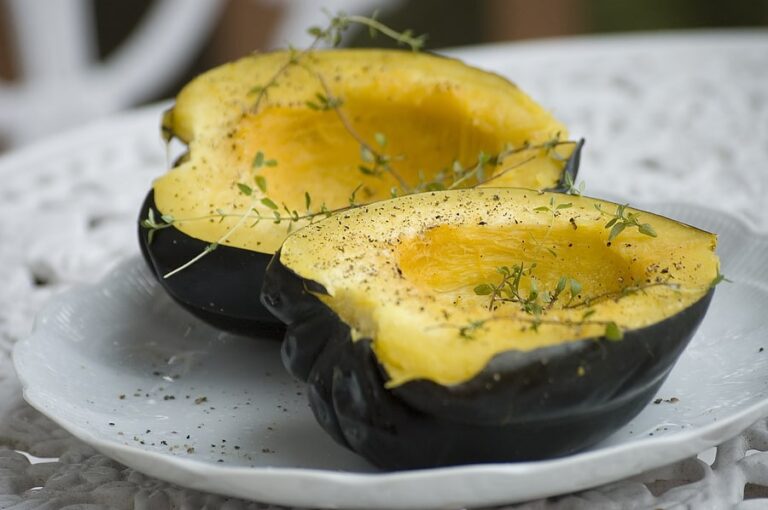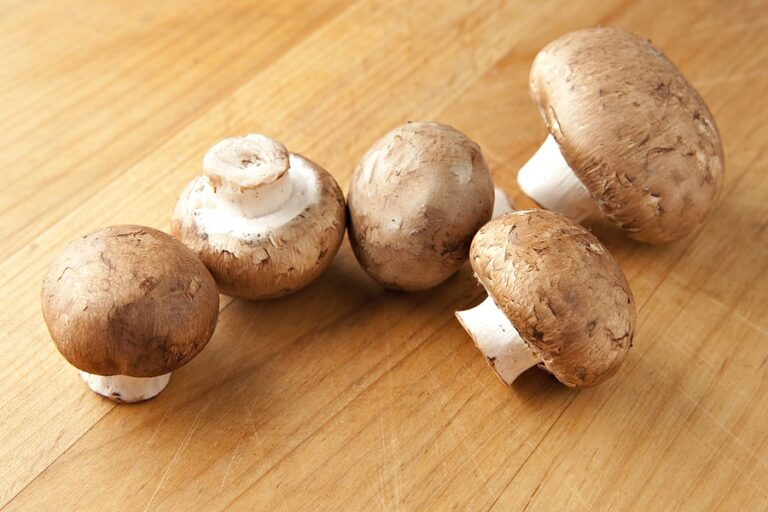Five Ways to Cook and Serve Taro
Taro, also called dasheen, eddo, or cocoyam, is always eaten cooked. Taro can be steamed, boiled, fried, stir-fried, baked, and braised. It is often added to stews and soups where it absorbs fatty juices and serves as a nutty thickener.
Taro is a starchy root vegetable that has a sweet, nutty flavor—a flavor and texture that seems a combination of chestnuts and potatoes.

Taro is about the size of a yam or sweet potato and has the interior color and texture of a coconut—thus the name cocoyam.
Taro shoots are edible after being blanched. Young taro leaves can also be cooked and eaten like mustard or turnip greens.
Kitchen Helpers from Amazon:
- Oster Vegetable Steamer
- Chef’s Knives Set of 6
- EZ Off Jar Opener for Weak Hands
- Pepper Core Remover Stainless Steel
- Kitchen Utensils – Set of 35
How to choose taro
- Select taro roots that are firm and heavy for their size and unblemished. Taro root should have no mold, soft patches, or wrinkling and should be firm to the touch at both ends.
- Freshly dug taro will be pinkish or whitish-green at the stem end. Just cut taro should be juicy and smell fresh.
- Large taro roots can be fibrous, dry, and mealy when cooked but have a nutty sweetness.
- Small taro or eddo will taste bland but be moister than large taro. Eddo is suitable for boiling and steaming.
How to store taro
- It is best to use taro as soon as possible because it tends to soften quickly.
- Keep taro in a cool, dark, well-ventilated place, not the refrigerator.
- Taro leaves will keep for several days in the refrigerator. Store taro in a perforated plastic bag. Wipe them with a damp cloth before refrigerating.
How to prep taro for cooking
- Taro contains crystals of calcium oxalate just beneath its peel. This substance is sticky, bitter, and irritating to the throat and skin unless neutralized during cooking. Wear gloves or oil your hands when preparing taro.
- If you blanch taro in boiling water for 5 minutes, the calcium oxalate crystals will disappear. But first, you must remove taro’s thick slightly hairy peel with a knife under running water to avoid the stickiness.
- To prevent discoloration, place peeled, cut chunks of taro in acidulated water.
- Be aware that when taro is cooked it will turn from bright white to cream to dapple grayish-purple.

Taro cooking suggestions
- Taro must be cooked and served hot. As taro cools after cooking, it becomes dense and waxy and difficult to eat. Taro that is boiled and mashed becomes gummy.
- Boil taro as you would a potato–peeled and cut into chunks then boiled for 15-20 minutes or until tender.
- Roast taro after parboiling. Roast for 10 minutes at 400ºF (204ºC). Roasted taro will have a light, dry, chewy texture, and sweet flavor.
- Stir-fry or fry thinly sliced taro and serve with a sauce. Taro can be sliced into chips or strips and pan-fried or deep-fried. It can be grated and used to make crêpes and pancakes. It can be cubed, steamed, and served with rice.
- Chinese cooks make a “basket” of shredded, deep-fried taro which is used to hold stir-fried vegetables and seafood.
- Braise or stew chunked taro. Taro used in soups and stews will thicken and absorb the flavor of the food to which it is added.
- Taro can be added to oily dishes such as steamed sliced pork belly to soak up the flavor of the other ingredients.
- Baked taro will become meaty but dry so it is best served with butter or meat juices.
- Taro leaves can be cooked like spinach or used to wrap other food for baking. The calcium oxalate in taro leaves is destroyed by cooking. Boil taro leaves in two changes of water for about 45 minutes or until very tender.
How to boil taro
- Boil in lightly salted water until tender, that is until a sharp knife can pierce the tuber with little resistance.
- Drain the water and set the taro in a colander to dry. Taro will continue to cook for a bit after they are out of the boiling water.
- Boiled taro can sit at room temperature for nearly an hour before the flavor and texture start to deteriorate.

How to pan-fry taro
- For pan-fried taro, use par-cooked (partially boiled) tubers, peeled or unpeeled.
- Cut into slices between ¼ and ½-inch thick.
- Heat 2 tablespoons of vegetable oil in a wide skillet over medium heat.
- Add taro. Cook in batches if necessary.
- Adjust the heat so that the slices sizzle but do not smoke.
- Add flavorings such as salt and pepper.
- Turn with a spatula until browned and soft.
How to roast taro
- Preheat the oven to 450 degrees F.
- Spread the taro on a pan or baking sheet. Drizzle the taro with olive oil or fat and toss well. The taro should be evenly coated and the pan should have light, even oil across the surface.
- Season with salt, dry herbs, or spices.
- Roast 20 to 30 minutes, until bottoms are browned and a spatula slides under them smoothly.
- Turn and keep roasting until done about 20 to 30 minutes.
How to bake taro
- Preheat the oven to 450 degrees F.
- Rub the taro vegetable oil; sprinkle it with salt. Prick the tuber with the tines of a fork.
- Place the taro on a baking sheet or lay it directly on the oven rack.
- Bake for 45 to 60 minutes (depending on size); turn once at halfway.
- Bake, until the tuber can be pierced with a knife inserted in the flesh, meets no resistance. The internal temperature should be about 210 degrees F.
Taro flavor partners
- Taro has a flavor affinity for almonds, cappers, coconut milk, ginger, green olives, hot chile peppers, lime, nuts, onions, and queso blanco.
Taro nutrition
- Taro is rich in potassium and contains magnesium, phosphorus, and iron.
- Taro leaves are rich in beta-carotene and calcium and contain vitamin C. Taro is a good source of fiber low in sodium.
- A half-cup of taro contains 100 calories.
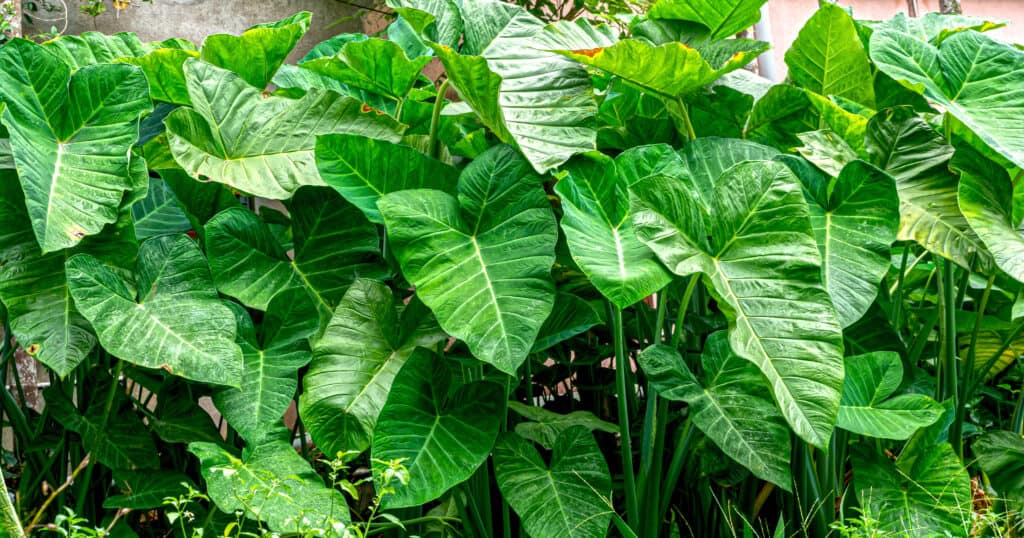
Get to know taro
- The taro plant can grow to 6 feet (1.8 m) tall and has very large leaves. Taro is related to and looks a bit like a philodendron. The taro tuber is commonly oblong, but it can also be oval and fat similar to celeriac.
- Taro is often referred to as the “potato of the tropics.” It is an important staple vegetable in the cookery of Vietnam, Cambodia, Laos, and much of Asia, throughout the Pacific Islands, the Caribbean, North Africa, and parts of Central and South America.
- The flesh of both the larger taro and eddo is white or cream-colored with pink-purple flecks.
- There are two forms of taro. The first is the taro corm or tuber which is about the size of a sweet potato, barrel-shaped, with a brown, shaggy skin that is distinctly ringed. Taro can weigh from ½ to 2 pounds (227-908 grams) and has a nutty, sweet flavor and dry texture. It is best boiled, fried, stir-fried, or added chunked to stews and soups.
- The second is a smaller corm or cormel that attaches laterally to the larger taro corm. This cormel which may sprout a pinkish bud at the tip and is about the size of a small potato is favored by the Chinese and Japanese and is called eddo. Eddo weighs from 2 to 6 ounces (57-170 grams) is moist and smooth textured. It is best steamed or boiled whole.
- Taro is native to Southeast Asia or India and has been cultivated for at least 7,000 years. Some scientists believe New Guinea natives were harvesting taro 30,000 years ago.
- Cultivation of taro spread from Southeast Asia eastward to China and Japan and westward to the Mediterranean and throughout much of Africa. Slave traders exported taro to the New World where it became an important crop in the West Indies, Central and South America, and the southern United States.
- The word eddo is derived from the West African word for taro and dasheen is a Creole name adapted from the French de Chine—which (erroneously for taro) means from China.
- There are more than 200 varieties of taro, but not all are cultivated. The word taro is sometimes used to encompass a diverse group of tropical edible tubers that in the past have been difficult to classify.
- The variety of taro eaten in Japan is small and round. The Japanese word for taro is satoimo. Several varieties of taro—both large and small–are found in the Pacific Islands. The Hawaiian food poi is made from steamed, mashed, and fermented taro, and the Hawaiian word lu’au refers to the leafy tops of young taro plants cooked in coconut milk.
- Taro grows quickly in tropical climates and can produce three small or two large crops a year under the right conditions.
The botanical name of taro is Colocasia esculenta.
Related article:
How to Plant, Grow, and Harvest Taro
Five Ways to Cook and Serve Taro
Articles of interest:
Best Herbs for Container Growing
Garden Planning Books at Amazon:
- Vegetable Garden Almanac & Planner
- Kitchen Garden Grower’s Guide Vegetable Encyclopedia
- Vegetable Garden Grower’s Guide
- Tomato Grower’s Answer Book
More kitchen tips:
Bring your harvest to the table. Kitchen prep tips and easy recipes for the vegetables you grow. Click below for vegetable prep and recipes you can use now.
- Almonds
- Apples
- Apricot
- Aprium
- Artichoke
- Arugula
- Asparagus
- Avocado
- Bamboo Shoots
- Banana
- Basil
- Beans, Dried
- Beans. Long
- Beans, Shell
- Beans, Snap
- Beets
- Bitter Melon
- Blackberry
- Bok Choy
- Broccoli
- Broccoli Raab
- Brussels Sprouts
- Cabbage
- Cardoon
- Carrots
- Cauliflower
- Celeriac
- Celery
- Chard
- Chayote Squash
- Cherimoya
- Cherries
- Chestnut
- Chickpea
- Chinese Cabbage
- Chives
- Cilantro
- Citron
- Clementine
- Collards
- Coriander
- Corn, Sweet
- Corn, Baby
- Corn Salad, Mache
- Cranberry
- Cress
- Cucumber
- Daikon
- Dandelion
- Dill
- Eggplant
- Endive, Belgian
- Endive and Escarole
- Fava Beans
- Fig
- Florence Fennel
- Garlic
- Ginger
- Grapefruit
- Grapes
- Guava
- Horseradish
- Jerusalem Artichoke
- Jicama
- Jujube
- Kale
- Kiwifruit
- Kohlrabi
- Kumquat
- Leeks
- Lemongrass
- Lemons
- Lettuce
- Lime
- Mache (Corn Salad)
- Mandarin Orange
- Mango
- Maple Syrup
- Marjoram
- Melons
- Michihili
- Mint
- Mizuna
- Mushrooms
- Mushrooms, Cremini
- Mustard Greens
- Napa Cabbage
- Nectarine
- Okra
- Olives
- Olive oil
- Onions
- Oranges
- Oregano
- Parsley
- Parsley Root
- Parsnips
- Passion Fruit
- Pawpaw
- Peaches
- Pears
- Peas, Garden Snap
- Peas, Snow
- Pei Tsai
- Peppers, Chili
- Peppers, Sweet
- Persimmon
- Pineapple
- Pineapple Guava
- Plantain
- Plums
- Pluots
- Pomegranate
- Potatoes
- Prickly Pear
- Pumpkin
- Quince
- Radicchio
- Radishes
- Raspberries
- Rosemary
- Rhubarb
- Rutabaga
- Sage
- Salsify
- Sauerkraut
- Savory
- Shallots
- Sorrel
- Spinach
- Squash, Summer
- Squash, Winter
- Strawberries
- Sunchokes
- Sunflower
- Sweet Potato
- Swiss Chard
- Tangerine
- Taro
- Tarragon
- Thyme
- Tomatillo
- Tomato
- Turnip
- Turnip Greens
- Yams

